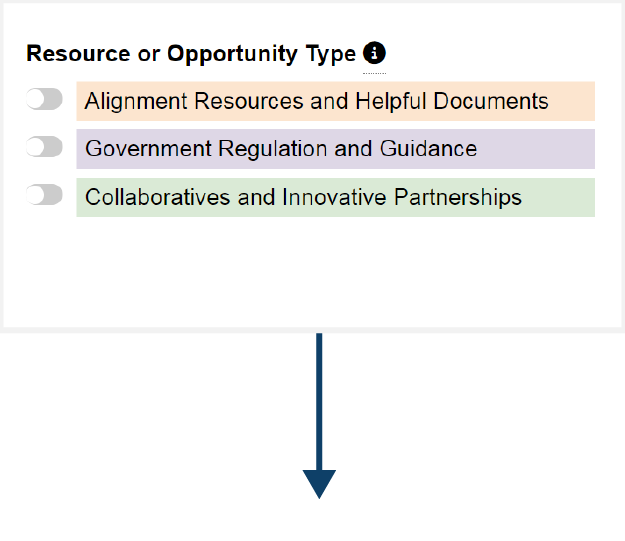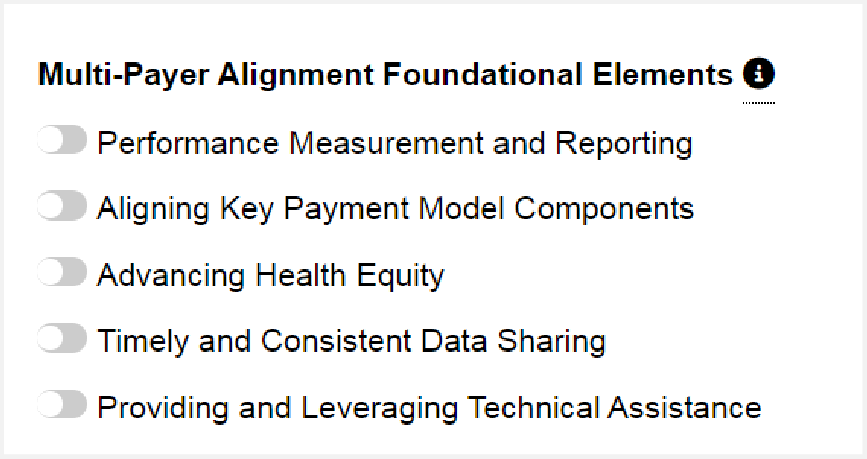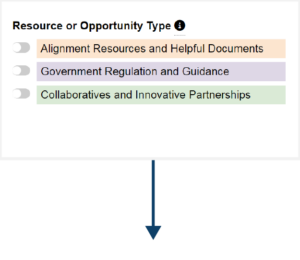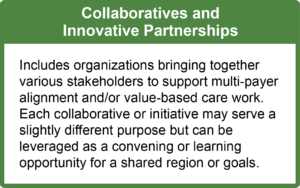LAN Learnings March 2016 Q&A
- May 17, 2016
- Posted by: Health Care Payment Learning & Action Network
- Categories: LAN Learnings, LAN Update, Webinars
Accountable Care: The Purchasers Perspective Webinar
March 23, 2016
During the webinar, David Lansky, LAN Guiding Committee member and CEO at the Pacific Business Group on Health (PBGH), discussed the elements of ACO design and purchaser perspectives on the current ACO market. Boeing’s Jeff White and PBGH’s Emma Hoo spoke candidly about the how Boeing and the City & County of San Francisco worked with PBGH to develop ACOs for their employees. Following are edited transcripts of the live questions.
Emma Hoo - Pacific Business Group on Health
The ACO created greater emphasis to work more closely across the provider system. It is important to know that in both San Francisco ACOs, the practices involved were still fairly small, mid-sized practices grouped together under independent practice association arrangements, so there were not traditional multi-specialty groups. So there was a lot of opportunity to create better information flow between the hospital systems with primary care physicians, and so forth. Even though the APM of capitation was in place for professional services, the hospital contracting was managed separately, and there was no integrated shared savings across the two. In creating an upside incentive for shared savings, this creates better alignment across two sides to the equation.
Not so much, because the BCBS population has spiraled over time; their patient population was at much higher risk than the rest of their population so there has been opportunity for focus on chronic care management and for reverse migration to level out risk mix across the carrier options.
Jeff White - The Boeing Company
At Boeing, we wanted to be simple in terms of the number of contracts we have. Our strategy was to have one contract with one big integrated delivery system, and that integrated delivery system can go and gather partners or subcontractors to fill out the contracted system. When you are taking risk, you need to ensure the other party can have a balance sheet of those risks. That was our method of starting off.
Yes, at Boeing, we have no problem sharing those. That’s a simple win for all of us if we had one set of quality metrics we all agree upon, and we believe that is a major part of our participation in the LAN. My hope is that we coalesce around a single set of metrics.
Yes, as with most insurance plans, healthier people, in general, selected the ACO plan which is why it’s complicated to make statement about quality without controlling for that variable and risk adjusting to some extent.
Yes, the carriers play a major role in this model, particularly with claim adjudication and data flow. They have really stepped up to their role with providing better data systems to manage patients better. They understand and have been very supportive of this model. If you look at what we, at Boeing, bring to the table versus an insurance carrier, we bring a stable work force of much known risk, so I think we can get better deals when negotiating contracts. I also want to point out to employers that systems enjoy the branding of partnerships to deliver better care, such as partnerships between hospitals and employers. It is good to know what this brand can be worth.
We communicated to employees that we had a website six months ahead of time and that we had a robust provider search that was pretty simple in terms of describing the financial incentives that come with using in-network ACO providers. The providers received welcome kits after they enrolled.
The systems gently reach out to employers in the event a patient did not select a primary care provider to ask if they would like to be assigned to a medical home. Our feeling is that employees trust their providers more than they trust the company or insurance companies, or any third party advocate. We encourage the development of the relationship between the employees and their primary care providers.
Both
This LAN webinar drew participants from companies of all sizes representing every region of the country. Far more questions were submitted than could be addressed in the time available. After the webinar, Emma Hoo and Jeff White sat down together to answer a selection of follow-up questions. They also shared resources to help purchasers who are interested in learning more about how to offer ACOs through their health plans.
The ACO contracts are designed to take into account the total cost of care, and would capture non-ACO claims costs as part of a retrospective claims reconciliation process to determine shared savings. High performing ACOs typically develop strong referral management systems and support information transparency on the quality and efficiency of its specialty referral panel. That said, many purchaser elect to eliminate or strongly discourage out-of-ACO access through benefit design. In the case of the San Francisco Health Service System, the ACOs are contracted under an HMO health plan, which in turn capitates medical groups for professional services; in that model members choose a primary care physician under a closed network.
Purchasers are inclusive of employers or an entity purchasing benefits on behalf of employers. For example, the San Francisco Health Service System purchases on behalf of four employers: the C&C of San Francisco, SF Unified School District, SF Community College District and the Superior Court.
There are typically state-level insurance regulations regarding the level of risk transfer, potential benefit mandates and other requirements for risk bearing entities that may create challenges for a multi-state employer. From an employer perspective, the objective is to better align goals across the delivery system, motivate investments in care redesign, and improve quality while managing the total cost of care through physician and hospital shared risk rather than merely transfer of insurance risk.
Boeing uses a number of access, care coordination, health status and quality outcomes measures – most of which are standard NQF measures. Meeting the quality performance goals is a threshold for financial gainsharing. The San Francisco Health Service System, working with the plan and provider partners, also use a variety of quality and utilization reporting measures.
Regardless of whether claims are managed by a plan or TPA, or whether the contracting accepts and manages capitation, key success factors are:
Communication and timely exchange of information, including notification of admissions and Emergency Department visits, management of care transitions and care coordination.
Joint management review of quality and utilization performance information to identify quality improvement opportunities, while also targeting potential areas of savings and waste reduction, such as duplication of services, generic drug substitution, and avoidable utilization through improved care coordination.
Alignment of financial incentives that motivate care redesign are important for sustaining care improvement – deeper discounts or provider steerage tend to produce one-time savings but do not generate lower trends over the long term. Providers need to work collaboratively to reduce variation in care and use the site of service that supports a better patient experience and manages resources efficiently.
Feedback has been positive in many areas. Absent a collaborative process and regular meetings, providers are not necessarily motivated to respond to typical utilization reports nor empowered to develop crosscutting solutions. Often, individual physicians are not aware of the degree of variation in care. The quality and utilization feedback reports common in an HMO environment may not be deployed for PPO-contracted providers. Provider ownership of identified opportunities and collaborative problem-solving are important elements. To the extent that provider organizations have also invested in resources for case management support of high risk individuals, such as through Boeing’s Intensive Outpatient Care Program, primary care physicians and their office staff have reduced administrative burden.
The structure of these ACO arrangements is less about the discounts (in some cases the health plan-negotiated contracts are still in force) than the commitment to jointly established objectives for managing the total cost of care and creating a better patient experience.
Boeing provides technical support in the adoption of care management infrastructure to support members with medically complex needs. The purchasers manage the relationships internally with limited support from their benefit consultants and legal counsel. Both organizations also use data warehouse vendors.
In both instances, the health plan maintains this role, noting that for the San Francisco Health Service System, Blue Shield HMO maintains the contract with the ACO and capitates professional services to medical group organizations, which in turn are delegated for claims administration. Boeing continues to use its third party administrators to pay claims and perform the other functions normally done by an insurance administrator.
Boeing piloted the Intensive Outpatient Care Program (IOCP) for high risk individuals and identified care support processes to improve the care experience and reduce/manage risks for these members. The experience was documented in a Health Affairs blog. PBGH subsequently was awarded one of the Center for Medicare and Medicaid Innovation grants to spread the IOCP model among 20+ provider organizations – two of those organizations are also part of the San Francisco Health Service System network. Key elements include engaging primary care physicians to refer members and recommend participation, initial face-to-face meetings with the nurse/care coordinator, multidisciplinary staffing (including behavioral health, social work, pharmacy) with medical director oversight/support as needed in the provider organizations to offer comprehensive member support.
Considerations include membership volume, geographic concentration, provider organization track record and experience in a given marketplace (prior experience with risk or capitation), constellation of physician group-hospital contracts or preferred referral arrangements, infrastructure, plan-provider relationships, types of care redesign innovation in play, alignment with other local, state or federal initiatives (e.g., experience in CMS MSSP).
A direct relationship allows for greater customization of program design, including network composition, care design elements, performance measures, risk or gainsharing arrangements. Direct contracting also requires more hands-on management and oversight on the part of the employer.
Working with a payer leverages existing data and network management capabilities. Program design may be more consistent across geographies for a multi-state employer. Considerations include the structure of the agreement (including access fees and incentive design), performance measures, gainsharing, data and information transparency and differentiation of ACO arrangement relative to traditional network offerings.
In either case, the employer may have a variety of options around benefit design incentives (e.g., waiving or reducing primary care copayments/coinsurance), contribution strategy, and out of network coverage and cost-sharing rules.
Frequency may vary depending on prior provider experience and stage of implementation, and if it is a direct contract with an employer or through a carrier. More frequent meetings may be common during implementation, with perhaps a transition to quarterly once reporting processes and governance are established. Meetings may also be increased in frequency to monthly if service or operational issues are identified.
David Lansky, PhD
Mr. Lansky serves as a member of the Health Care Payment Learning & Action Network’s Guiding Committee. He serves as President and Chief Executive Officer of the Pacific Business Group on Health and directs its efforts to improve the affordability and availability of high quality health care.
Jeff White, MBA, MS
Mr. White serves as a member of the Health Care Payment Learning & Action Network’s Population-Based Payment Work Group. He is Director of Health Care Strategy and Policy at The Boeing Company where he leads a team responsible for health care benefits strategy, contract negotiations, and plan policy, which accounts for $2.6 billion in annual spending. Mr. White and his team take an active role in partnering with the provider community, associations, and other industry stakeholders to explore innovative improvements to health care delivery systems ranging from deep clinical programs, like Medical Homes, to broader network strategies such as Centers of Excellence and Accountable Care Organizations (ACOs).
Emma Hoo
Ms. Hoo is a member of the Health Care Payment Learning & Action Network. She is a Director at the Pacific Business Group on Health.

















 Emily DuHamel Brower, M.B.A., is senior vice president of clinical integration and physician services for Trinity Health. Emphasizing clinical integration and payment model transformation, Ms. Brower provides strategic direction related to the evolving accountable healthcare environment with strong results. Her team is currently accountable for $10.4B of medical expense for 1.6M lives in Medicare Accountable Care Organizations (ACOs), Medicare Advantage, and Medicaid and Commercial Alternative Payment Models.
Emily DuHamel Brower, M.B.A., is senior vice president of clinical integration and physician services for Trinity Health. Emphasizing clinical integration and payment model transformation, Ms. Brower provides strategic direction related to the evolving accountable healthcare environment with strong results. Her team is currently accountable for $10.4B of medical expense for 1.6M lives in Medicare Accountable Care Organizations (ACOs), Medicare Advantage, and Medicaid and Commercial Alternative Payment Models. Mr. James Sinkoff is the Deputy Executive Officer and Chief Financial Officer for Sun River Health (formerly known as Hudson River HealthCare), and the Chief Executive Officer of Solutions 4 Community Health (S4CH); an MSO serving FQHCs and private physician practices.
Mr. James Sinkoff is the Deputy Executive Officer and Chief Financial Officer for Sun River Health (formerly known as Hudson River HealthCare), and the Chief Executive Officer of Solutions 4 Community Health (S4CH); an MSO serving FQHCs and private physician practices. Victor is the Chief Medical Officer for TennCare, Tennessee’s Medicaid Agency. At TennCare, Victor leads the medical office to ensure quality and effective delivery of medical, pharmacy, and dental services to its members. He also leads TennCare’s opioid epidemic strategy, social determinants of health, and practice transformation initiatives across the agency. Prior to joining TennCare, Victor worked at Evolent Health supporting value-based population health care delivery. In 2013, Victor served as a White House Fellow to the Secretary of Health and Human Services. Victor completed his Internal Medicine Residency at Emory University still practices clinically as an internist in the Veteran’s Affairs Health System.
Victor is the Chief Medical Officer for TennCare, Tennessee’s Medicaid Agency. At TennCare, Victor leads the medical office to ensure quality and effective delivery of medical, pharmacy, and dental services to its members. He also leads TennCare’s opioid epidemic strategy, social determinants of health, and practice transformation initiatives across the agency. Prior to joining TennCare, Victor worked at Evolent Health supporting value-based population health care delivery. In 2013, Victor served as a White House Fellow to the Secretary of Health and Human Services. Victor completed his Internal Medicine Residency at Emory University still practices clinically as an internist in the Veteran’s Affairs Health System. Dr. Brandon G. Wilson, DrPH, MHA (he, him, his) joined Community Catalyst as the Director of the Center for Consumer Engagement in Health Innovation, where he leads the Center in bringing the community’s experience to the forefront of health systems transformation and health reform efforts, in order to deliver better care, better value and better health for every community, particularly vulnerable and historically underserved populations. The Center works directly with community advocates around the country to increase the skills and power they have to establish an effective voice at all levels of the health care system. The Center collaborates with innovative health plans, hospitals and providers to incorporate communities and their lived experience into the design of systems of care. The Center also works with state and federal policymakers to spur change that makes the health system more responsive to communities. And it provides consulting services to health plans, provider groups and other health care organizations to help them create meaningful structures for engagement with their communities.
Dr. Brandon G. Wilson, DrPH, MHA (he, him, his) joined Community Catalyst as the Director of the Center for Consumer Engagement in Health Innovation, where he leads the Center in bringing the community’s experience to the forefront of health systems transformation and health reform efforts, in order to deliver better care, better value and better health for every community, particularly vulnerable and historically underserved populations. The Center works directly with community advocates around the country to increase the skills and power they have to establish an effective voice at all levels of the health care system. The Center collaborates with innovative health plans, hospitals and providers to incorporate communities and their lived experience into the design of systems of care. The Center also works with state and federal policymakers to spur change that makes the health system more responsive to communities. And it provides consulting services to health plans, provider groups and other health care organizations to help them create meaningful structures for engagement with their communities. Tamara Ward is the SVP of Insurance Business Operations at Oscar Health, where she leads the National Network Contracting Strategy and Market Expansion & Readiness. Prior to Oscar she served as VP of Managed Care & Network Operations at TriHealth in Southwest Ohio. With over 15 years of progressive health care experience, she has been instrumental driving collaborative payer provider strategies, improving insurance operations, and building high value networks through her various roles with UHC and other large provider health systems. Her breadth and depth of experience and interest-based approach has allowed her to have success solving some of the most complex issues our industry faces today. Tam is passionate about driving change for marginalized communities, developing Oscar’s Culturally Competent Care Program- reducing healthcare disparities and improving access for the underserved population. Tamara holds a B.A. from the University of Cincinnati’s and M.B.A from Miami University.
Tamara Ward is the SVP of Insurance Business Operations at Oscar Health, where she leads the National Network Contracting Strategy and Market Expansion & Readiness. Prior to Oscar she served as VP of Managed Care & Network Operations at TriHealth in Southwest Ohio. With over 15 years of progressive health care experience, she has been instrumental driving collaborative payer provider strategies, improving insurance operations, and building high value networks through her various roles with UHC and other large provider health systems. Her breadth and depth of experience and interest-based approach has allowed her to have success solving some of the most complex issues our industry faces today. Tam is passionate about driving change for marginalized communities, developing Oscar’s Culturally Competent Care Program- reducing healthcare disparities and improving access for the underserved population. Tamara holds a B.A. from the University of Cincinnati’s and M.B.A from Miami University.


 Dr. Peter Walsh joined the Colorado Department of Health Care Policy and Financing as the Chief Medical Officer on December 1, 2020. Prior to joining HCPF, Dr. Walsh served as a Hospital Field Representative/Surveyor at the Joint Commission, headquartered in Oakbrook Terrace, Illinois.
Dr. Peter Walsh joined the Colorado Department of Health Care Policy and Financing as the Chief Medical Officer on December 1, 2020. Prior to joining HCPF, Dr. Walsh served as a Hospital Field Representative/Surveyor at the Joint Commission, headquartered in Oakbrook Terrace, Illinois.








